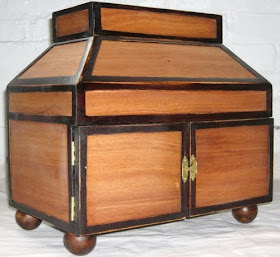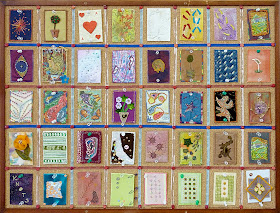
There are a number of interesting samplers coming up for auction in the UK in the next few days - here is a round up of some of them. This first from Friesland in the north Netherlands measuring 12 inches x 19 inches is being auctioned by:
Locke & England on 25 March 2010 at 11am GMT. The lot number is 421 and the estimate is £40 - £60.

This second, an intriguing English needlework picture circa early 18 century of a monarch and a page, with a deer, hound, insects, foliage and the sun in splendour, worked in silk and metal thread in a variety of stitches on a linen ground measuring 7 inches x 10 inches is for sale by
Mellors & Kirk on 25 March 2010. It is lot 811 estimated at £100-£150 and is somewhat threadbare and faded and requires remounting.

Lot No 680 at the
Gardner Houlgate Auction on 24 March 2010 estimated at £3,000 - £5,000 is a fine and rare 16th/17th century needlework employing tent stitch and raised embroidery with silks and metallic thread on a blue ground. It is worked with numerous figures, wild animals and birds interspersed with trees and buildings and measures 15 inches x 18 inches.
 Toovey's
Toovey's have 2 interesting lots of 4 samplers each. The first, 2915 is 3 pattern darned samplers by `Alice Worsfold, Wiston School`, dated 1891, 1892 and 1893, and a similar sampler by `Eliza Worsfold, Age 13, Wiston School`, dated 1903, all displaying various stitching techniques in polychrome silks. The second set of 4 samplers, lot 2916, has alphabet samplers from the same girls. The estimates are £150 - £250 and the sale begins on 24 March 2010.

Above is an early Victorian needlework pin cushion sampler, with an estimate of £100 - £150 detailed `Lady Webster, Battle Abbey, Sussex, July 31 1839` on one side, and a pious verse on the side you can see here, worked with red thread within a green border, it measures approx 2 inches x 2.5inches and is lot 2906 also for sale by
Toovey's on 24 March 2010.
BLPT3)Mvbg~~_3.jpg)
Framed in pretty verre églomisé, this pair of needlework pictures measuring 6 inches x 8 inches has an estimate of £150 - £200 and is being auctioned by
Lock and England on 25 March.
Lot number 407.

There are
13 samplers for auction at Goringes North Street, Lewes and here are 2 Adam and Eve examples for you to see. This first example, Lot 109, is a George III needlework sampler, by Rachael Cheffne, dated September 1789, worked with a verse, flower and plants, and later framed. it measures 14.5ins x 14ins and its estimate is £100-150. The border around the verse is seen frequently in its satin stitched white-work variety on a number of north of the border Hollie Point samplers. I have not been able to trace Rachel so far.

However, Georgiania Louisa West Wiard is traceable and was christened on 21 May 1826 at Beyton in Suffolk. She was the duaghter of John and Mary Anne Wiard. This sampler is Lot 98 and is described as a rare William IV needlework sampler measuring 26 ins x 16 ins. Estimate £1,000-1,500. I really like that looping alphabetic border.
 While reseaching the collection in the University of Indiana Library, I thought it would be a pity to stop at samplers, so I entered Quilt in the Search box to see what came up - and what came up was this joyful Quaker Friendship Quilt.
While reseaching the collection in the University of Indiana Library, I thought it would be a pity to stop at samplers, so I entered Quilt in the Search box to see what came up - and what came up was this joyful Quaker Friendship Quilt. Each quilt block is signed by its maker, sometimes with a verse, a dedication or a name. This block is particularly interesting for its inked drawing of log cabin and flag above the signature.
Each quilt block is signed by its maker, sometimes with a verse, a dedication or a name. This block is particularly interesting for its inked drawing of log cabin and flag above the signature. And it would be wrong to assume that it is purely women's work, as this block by Silas Warner makes clear.
And it would be wrong to assume that it is purely women's work, as this block by Silas Warner makes clear. I really love these mordant resist madder dyed cloths with a splash of eastern influence for their painterly designs and warm, rich tones, don't you?
I really love these mordant resist madder dyed cloths with a splash of eastern influence for their painterly designs and warm, rich tones, don't you?




















BLPT3)Mvbg~~_3.jpg)

























